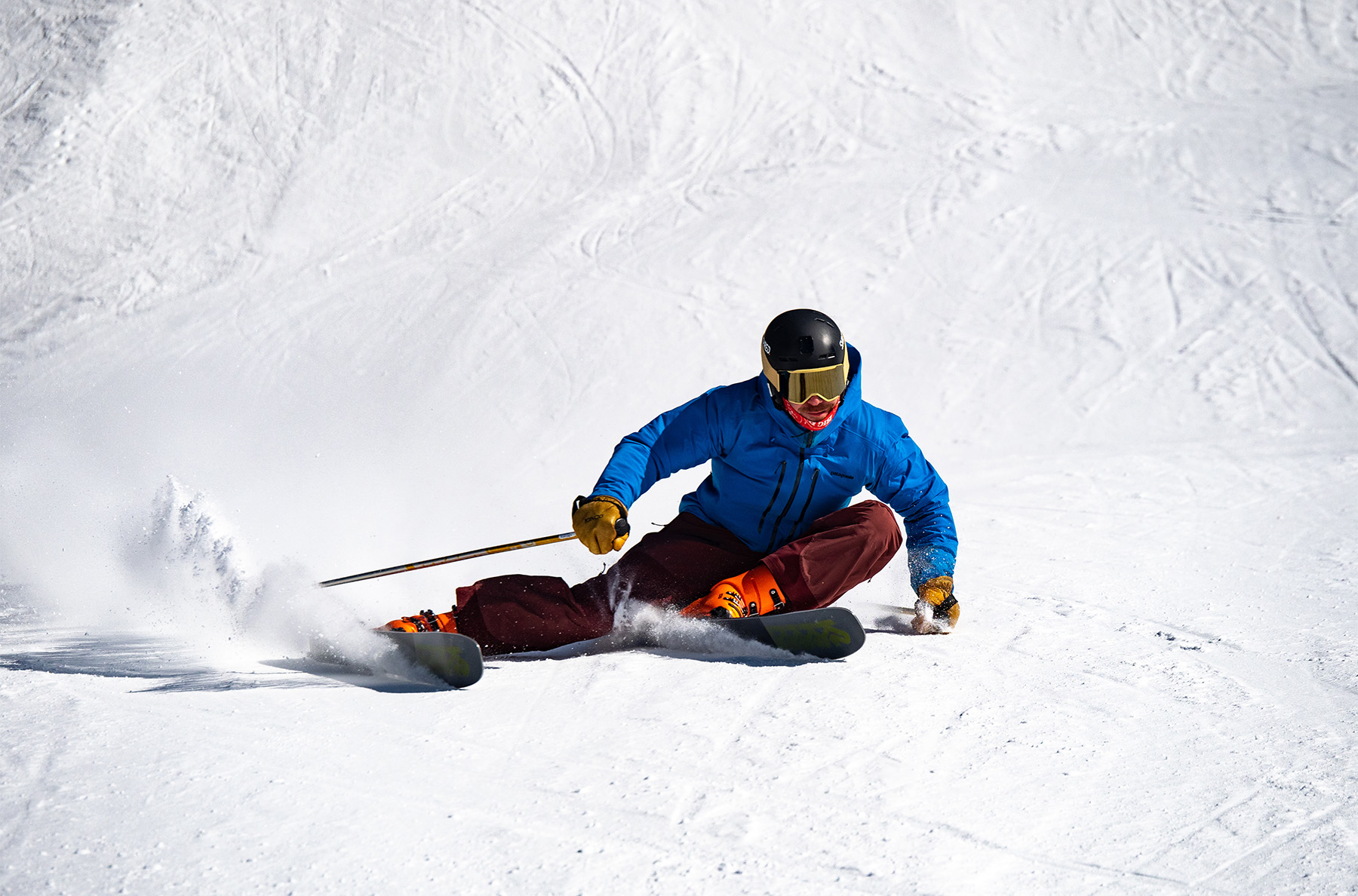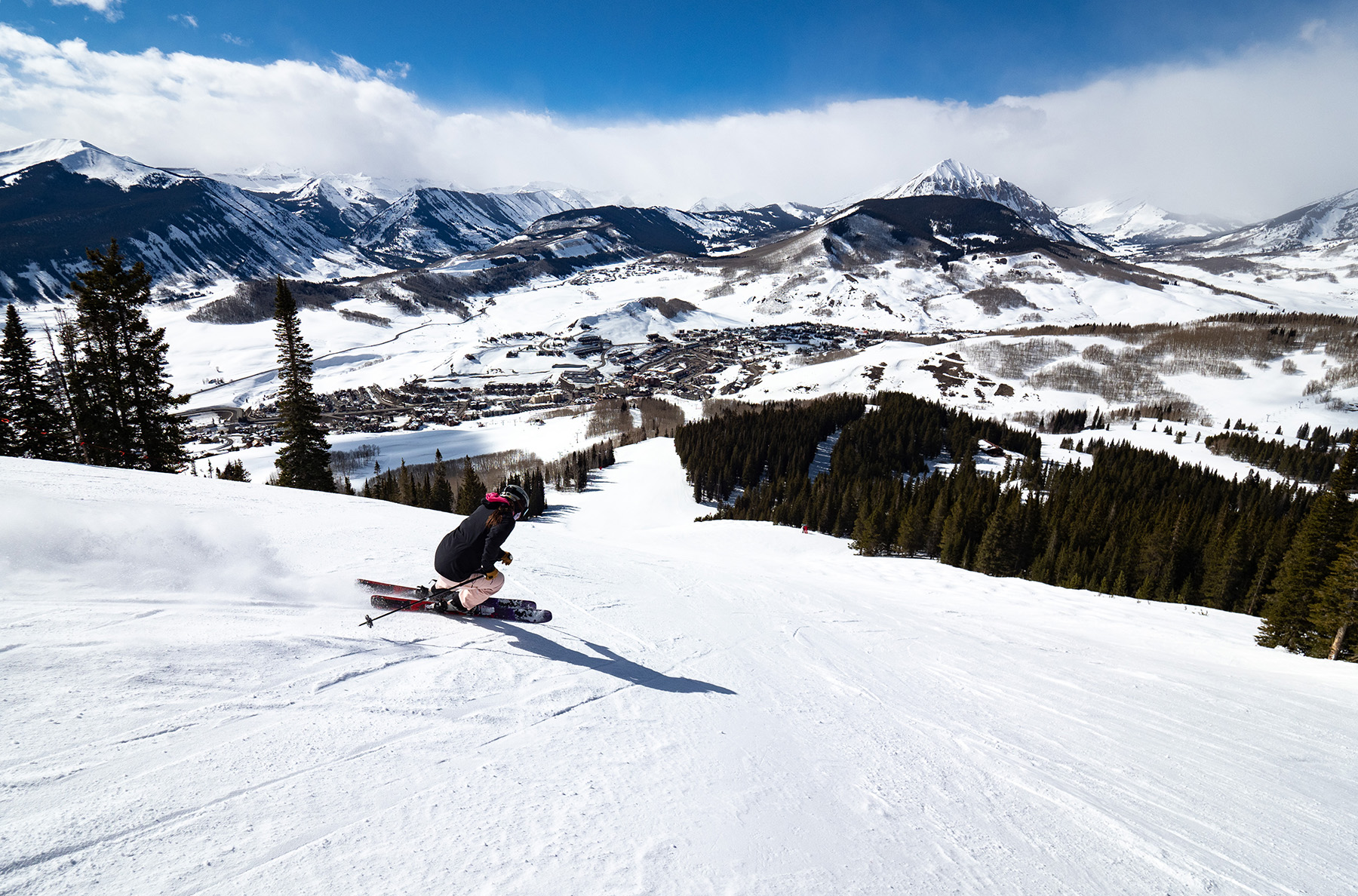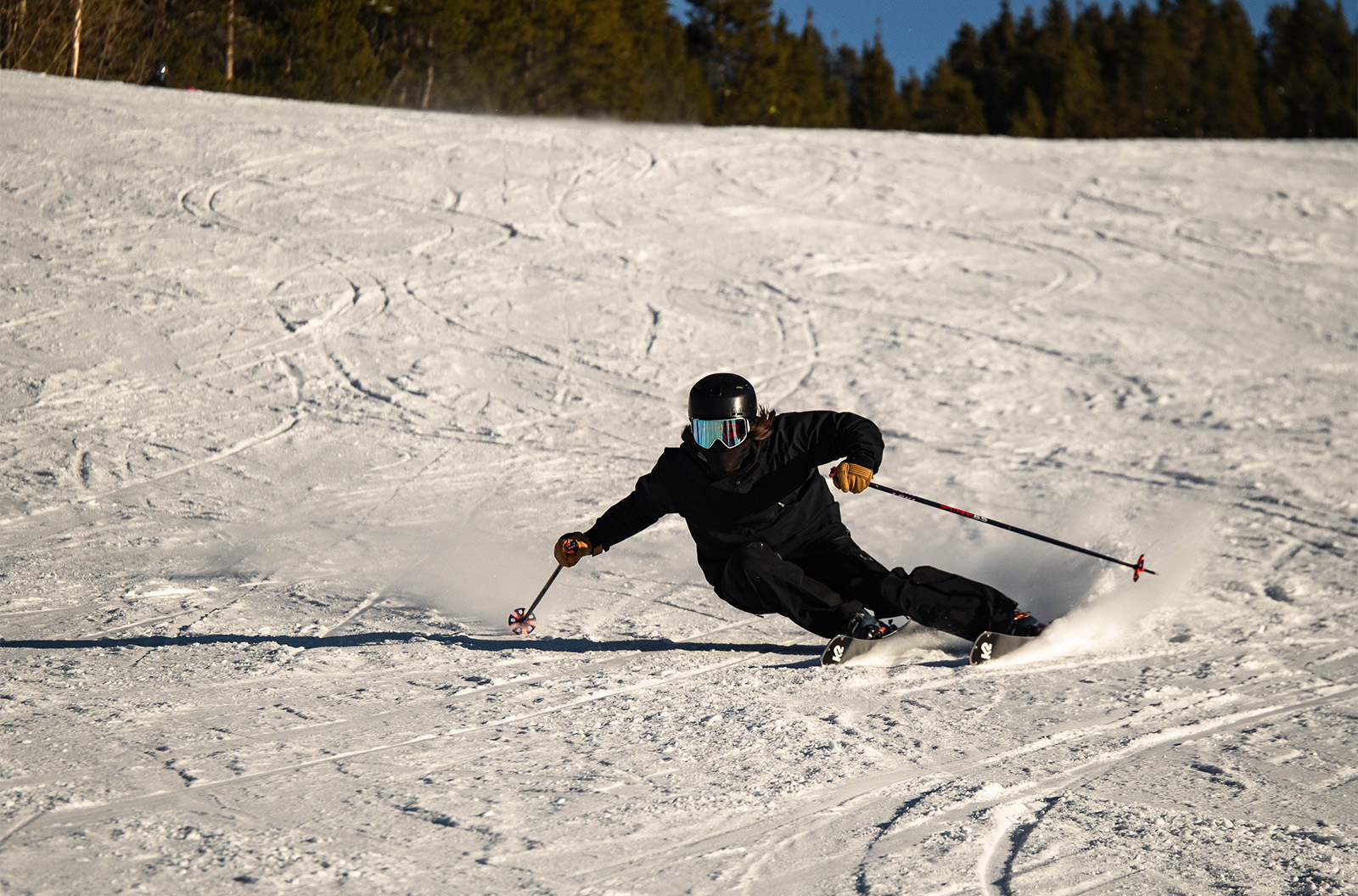



Luke Koppa, Kara Williard, and I talk about our upcoming test, where we’ll be mounting up more than 20 pairs of the same ski with more than 20 different alpine bindings in the attempt to find out what really separates the most popular alpine (and 50/50) bindings from one another.
We cover some of the things we’re most curious about (and we want you to let us know your questions, too!); and why we chose the K2 Mindbender 99Ti as our reference ski. Oh, and we also talk about our recent wildlife encounters, and what we’re celebrating this week.
TOPICS & TIMES:
- Teasers (0:30)
- Our Reference Ski: K2 Mindbender 99Ti (5:30)
- The Binding Lineup (10:01)
- More info for Blister Members (25:29)
- Tangent: Animal Encounters (27:34)
- What We’re Celebrating (31:19)
RELATED LINKS:

Kara talks about delta and ankle joint range.
To clarify, the foot and ankle biomechanics are addressed inside the ski boot. More proximal biomechanics are addressed outside the boot.
For example, limited or excessive ankle dorsiflexion are done inside the boot. As are excessively pronated or supinated feet.
Bow legged/knock kneed are addressed outside the boot with canting.
People who have unusual body proportions, such as torso/lower extremity, or tib/fib-femur, ratios are the ones who struggle with binding delta.
For example my ti/b/femur ratio has a longer than average tib/fib, so a binding with high delta puts my knee too far forward (overflexed.)
I hope listeners find this helpful, binding delta is kind of my soap box.
I’m looking forward to the results of this test as binding are the least understood of ski gear.
Hey Ted,
Thanks for elaborating and I totally hear you on all of this. As I briefly mentioned, issues regarding fore/aft stance balancing should be addressed within the boot and with a boot fitter via ramp angle and forward lean, as would any stance balancing regarding pronation and supination, and knee misalignment. The binding still is a variable that can affect someone’s fore/aft balance on a ski. There are instances where a mixture of these factors, e.g. longer tip/fib and femur ratios and a really hypermobile ankle joint can be addressed within the correct boot and binding combo. I mentioned that this was a pretty rare occurrence, but the binding delta is something I am going to be personally looking at, as I step into these different bindings, knowing what I know about my unique anatomy and stance issues. I will try to transfer this in a way that is useful to others who might deal with some similar issues. Thanks for elaborating on that, and breaking it down like that certainly is useful.
Wildlife encounter…?
I’m in Farallones, Chilé right now for the Chilean leg of the Freeride Sudamerica Championship, first time in South America. We drop El Colorado Tuesday and La Parva the following Sunday.
The road from Santiago up to the mountains is like nothing I’ve ever seen before. The switchbacks make Beartooth Hwy in a rainstorm seem docile. Twenty degree turns up serious pitch on an icy road that’s maybe 1.5 lanes.
I see a road sign with a cow on it. WTF does that mean? Cow crossing? There’s nowhere for cows to cross to or from, just sheer cliff walls.
But yup, halfway up, at the apex of one of those steep, sharp switchbacks, four cows, standing tandem, with their sides against the wall. No idea where they came from.
Fifteen minutes later, another group of them, walking downhill in the middle of the road.
Heh, a few years ago when I patrolled, I had to rescue a porcupine who was trapped on a race course between the b-nets. Poor guy had my sympathy. The cows had me wondering how well the car was insured because – Chilean steak!
Do a 15 din and 18 din binding feel the same when run at a 10? Would be cool to test with the pivot 15 and 18 that share the same construction and only differ on the strength of springs as far as I’m aware.
I would love to see a sort of graph similar to a mountain bikes leverage curve for a binding release. Force VS displacement. Would be cool to get blister labs on the case. Are some bindings more linear? Progressive? Digressive? Does that affect snow feel?
Very excited for the test.
this is my biggest question as well… I dont run a huge DIN but want to know if there is a safety or performance issue on the bindings that have a bigger spring…
This is great to see and hear. I have done a lot of research on binding position for my MSc. and most people don’t understand that many times differences between skis that make one loved and another hated is the binding position. I’ll be interested to see what you find as an effect from different bindings using a standardized position. Your discussion on binding delta is important as well but I disagree it is only out of proportion people so to speak that struggle with the effects of delta. It is huge and misunderstood. I have an athlete now in New Zealand. She is one of the top girls In Canada in her age group and we just dropped her zeppa by several mms in the heel. She is more forward and the skis are more responsive. as a result of making her foot flatter in the boot. Binding delta has a similar effect but also simultaneously decreasing effective boot forward lean angle. Boot ramp and binding delta are big deals and not just for out of proportion people. I hope you expand on it. Also would be great to see you do binding stiffness tests. I started but don’t really have time anymore. There is a lot of misunderstanding and people thinking elasticity is everything. Elasticity by itself without understanding stiffness is meaningless. Would be great to see you test each binding for stiffness.
Love that you will asses the practical side (entry, setup, mounting).
Would be great to work in some piste/racey bindings to define one of the ends of the spectrum just like you are looking at 50/50 bindings on the other end.
Another plug for expanding on binding delta. I am very sensitive to it, being tall and heavy. If a binding isn’t 0-3mm toe low, I know it and make shims to correct. I recommend you take one binding with a large toe low value (typically Marker Royal family) and at the end of the test, add shims to get to 0-1 toe low, and then 1-2 toe high. I cannot tolerate toe high, and have much more tolerance with larger toe low delta’s. It combines with binding mount position to determine how much weight is on the tips of the ski.
Second suggestion is while experimenting with shims, try both toe and heel shims at the end to raise “stack height” of a binding to see what that feels like. That can vary a lot within some range and can be felt when carving a ski. The ultimate “high stack” binding is a frame binding, which might be interesting to try as well.
Third an last suggestion, try a race binding (race Plate) on the ski just to see what that does. Ideally remount the same binding on a race plate to increase stack height and “stiffen” the middle of the ski. Racers seem to prefer this setup for gates in all cases.
Lot’s of variables in play for this test, will probably need to apply some statistics to sort it all out. Good luck and looking forward to hearing the results. Good call on reporting results in “installments” rather than one giant report (the Buyer’s guide is already painful enough to deal with)
If I were to plan a trip to the 2023 Blister Summit would these same skis with different bindings be available to try out? I’ve always wanted to compare different bindings, this seems like a very good opportunity. If that hadn’t been considered already, could it?
I’m really curious as to how Sascha gets on with some of these bindings, if she is taking part in this test. I ski a 24.5, and have one hell of a time dealing with the marker griffons, both the older and the newer one, due to heel being an absolute bear to step in and step out of. My friend skis a larger boot, and doesn’t seem to have the same issues I have with the binding. I’m also wondering if you are able to corroborate the elasticity values given by the manufacturers.
For these tests, to achieve a wider range of options for fore/aft mount positions among many testers who use a wide range of boot sole lengths (while also constrained by the exclusion of adjustable demo bindings from these tests, duh)—consider mounting 2 sets of binding inserts per ski. You end up with 4 combinations of toe/heel pairs on each ski. A decent solution for the tests, but terrible for Luke’s blisters. :)
I am curious about:
1. Weight: Will testers sense the differences between a heavy Pivot 18 (~1245g) vs. light Squire 11 (~820g)? Will they sense that lighter bindings result in more rebound/pop? More playfulness while slashing/pivoting? A less stable/smooth ride?
2. Rubber Layer: Will testers sense the differences between a cushy rubber layer vs. none? Like shocks from high-impact stomping to flat hardpack? STH2 has rubber, Pivot 18 does not. Also, the STH2 16 toe has a “Transfer Switch” to select between cushy or rigid transmission. Will testers sense the difference?
3. Transmission vs. Elasticity: Will testers sense poor transmission of the Look Pivot heel? Try some very forceful nose butters and see if you can sense your heel swimming loosely with very vague transmission.
Im really hopping you guys get into the strength of each binding in detail.
I love my Pivot 15/18 but im going with markers on my new Woodsman 102.
because I feel its a more precise binding on the days it hasn’t snowed in a bit.
A great reference binding for maximum effect on ski flex: the Marker Duke/Baron. Also a great way to figure out of you like a high stack height. Both attributes are extremely noticeable. “Like standing on a brick on your skis,” a TGR Forums member once rightly opined. Not that it keeps me from skiing them on my pre- and post-season hikes up the Kan. They were inexpensive, and they still work, dammit. I have no idea why you aren’t including them in the test.
Metric shit ton: I thought that this slang was exclusive to the state of Washington.
Any chance of sneaking a Knee binding in there? Slightly left field option.
Re: Shout… don’t know anything about it but imagine a lot of the success was hitting the stain instantly. Once stuff dries, I find it’s much harder to remove (ie Luke’s white t-shirts are toast).
On the topic of stains. Clothes with a bit of stretch (no dwr), I ‘think they stain easier than a full cotton equivalent. Happy for you to test that hypothesis. Garment in question is carhartt shorts with some lycra for the stretch bit.
I think a really, really interesting binding to include would be the new Tyrolia Protector. If these do not have any significant performance drawbacks, and work as intended to mitigate knee injuries, they could be a real game changes. I know Blister doesn’t typically focus on knee ligament injuries, but this represents a real danger for people at all levels in the sport! If a big player like Tyrolia can shift the needle with binding design, it would be a huge steop forward.
+1 on the Tyrolia Protector (for this test in the Attack).
Would also be sweet to analyse it’s efficiency (compared to Pivots or even the Knee binding) in the blister labs.
One binding category noticeably missing from your test are race bindings. Plates are not required as several can be mounted flat, though brake options can be hard to find. Ones that come to mind include Look Rockerace, Tyrolia FreeFlex, and Marker XComp. Last year I had success using Rockerace on 183 Bonafides and this season I plan to mount XComps to my pair of Peak 104s.
Really looking forward to this comparison! It’s too bad you can’t blind the testing …but obviously there are constraints associated with putting boots into different bindings.
I would echo above comments re ramp angle being noticeable and important… As a semi isolated variable. I really dislike dynafit for their ramp angle, I chose marker alpinist because it’s flat. Also interested to know about elasticity and suspension for toe/ heel piece – ie skiing hard pack, can you tell the difference between the bindings? And then of course, how does the shift compare to performance of true alpine /salomon STH2?
Also height of the binding above the ski- noticeable? Improves ski control? Carving?